Products Scan Our science '%20fill='black'/%3e%3c/svg%3e)
Skincare 
Bath & Body 
Make up 
Trending 
Skincare
Moisturizers
Treatments
Cleansers
Eye Care
Bath & Body
Make up
By Anton Ponomarev – Founder of CreamScan, MBA, and a skincare expert with two decades of industry expertise.

Snail mucin is having a major moment in skincare. From K-beauty to luxury Western brands, it's promoted as a multi-tasking miracle – wound healing, repairing, and reducing wrinkles. But does the science back up the hype?
Let’s take a deep dive into the research behind snail mucin to separate fact from fiction – and explore the ethical and sustainability issues behind its production.
The snail beauty products market was valued at $1.4 billion in 2023 and is projected to reach $3.4 billion by 2034. The Asia-Pacific and North America regions are key markets, with younger consumers and those seeking premium skincare driving demand. Social media and influencer marketing have fueled awareness, making snail beauty more than a trend – it’s now a global phenomenon. Products like the COSR Advanced Snail 96 Mucin Power Essence have gained popularity across the globe.
At the heart of this surge is snail secretion filtrate (SSF) – the filtered and purified form of snail mucin – which has become the hero ingredient in snail beauty products. While some formulations also include snail egg extract or other snail-derived compounds, SSF remains the most widely used and promoted component.
It looks like everyone is convinced of the benefits of snail beauty products – from millions of consumers to influencers and, surprisingly, even dermatologists.


Many dermatologists consider snail mucin to be well-researched and effective. Indeed, there are many studies about snail mucin, but as we know, it's not about how much, but how good.
In this article, we explore the scientific evidence behind snail mucin to assess its true efficacy.
⚠️ Spoiler – Our analysis indicates that, despite its popularity, there is no substantial evidence to support the majority of the claims made about the efficacy of SSF.
⏬ If you want to skip the details of our investigation and keep the long story short, you can jump straight to the conclusion of this article.
Well, 90% to 99% of snail mucin is simply water.💧
Snail mucin is the natural secretion produced by snails, primarily functioning as a lubricant for movement and a protective barrier against environmental damage. It is a viscous, gel-like substance that reduces friction as snails glide while also protecting their soft bodies from injury, dehydration, and microbial threats.
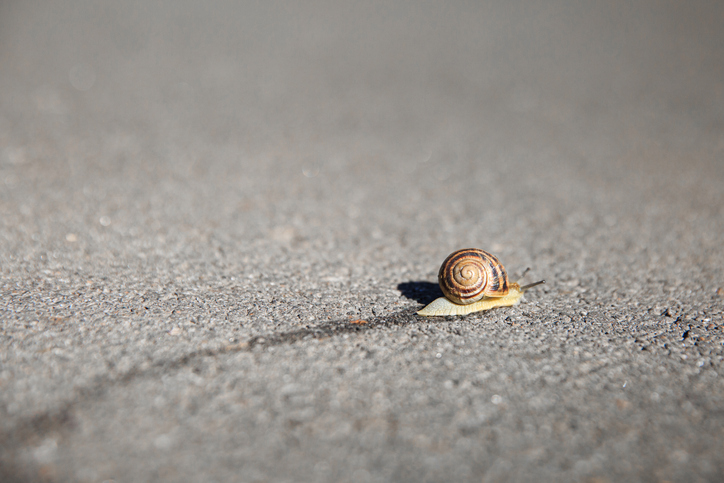
Commercially, mucin is primarily harvested from Helix aspersa (also known as Cryptomphalus aspersa, the garden snail) and other edible species used for escargot, ensuring the secretions are non-toxic and safe for human use.
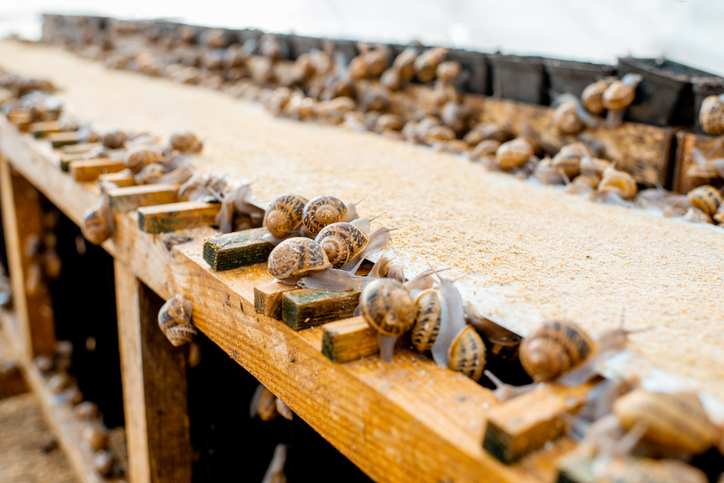
Snail mucin is predominantly composed of water, accounting for approximately 90% to 99.7% of its content⁸. Apart from water, the remaining of snail mucin is a complex mixture rich in compounds that are claimed to benefit the skin, including:
That sounds impressive – but are these compounds present in amounts that can actually make a difference?
Here is the chemical composition⁹ of mucin of Helix aspersa Müller, commonly known as the garden snail, which is extensively used in the skincare industry for snail mucin production:
|
Compound
|
Percentage
|
|
Water
|
97%
|
|
Proteins
|
1.5%
|
|
Glycolic acid (GA)
|
1.0%
|
|
Collagen
|
0.3%
|
|
Hyaluronic acid (HA)
|
<0.1%
|
|
Allantoin
|
<0.1%
|
|
Elastin
|
<0.1%
|
|
Vitamins (B12, C, E, A)
|
<0.0001%
|
Let's briefly review the scientifically proven effects of these compounds.
1️⃣ Proteins. The proteins in snail mucin are primarily glycoproteins and lectins, with some studies showing they are effective against certain bacteria, such as Staphylococcus aureus and Escherichia coli. These antimicrobial properties likely help the snail protect itself from bacterial infections while sliding across surfaces.
Some studies suggest that glycoproteins may enhance skin barrier function and support wound healing, but no clinical trials in humans have confirmed these effects yet.
2️⃣ Glycolic acid. Glycolic acid (GA), a widely used alpha-hydroxy acid (AHA), is utilized in professional peels, where dermatologists and licensed estheticians apply concentrations ranging from 30% to 70% for intensive exfoliation. In medium-strength products (concentrations of 10–20%), it acts as a gentle chemical peel.
Even in 100% snail mucin, glycolic acid accounts for only about 1% – a concentration too low to induce exfoliation.
3️⃣ Collagen. Collagen applied to the skin cannot replenish lost collagen since its molecules are too large to penetrate deeply and directly influence collagen production or repair. It acts as a humectant, attracting water to the outer layer of the skin and improving hydration.
Snail Secretion Filtrate (SSF) is essentially a purified form of snail mucin. It is also known as SCA – Secretion of Cryptomphalus Aspersa. The term "filtrate" indicates that the raw mucin has undergone filtration and purification processes to remove impurities, resulting in a cleaner and more refined ingredient suitable for skincare formulations.
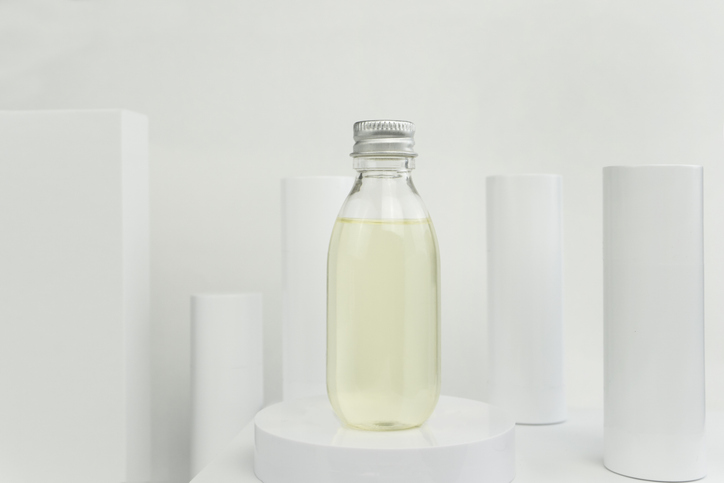
Cosmetic snail secretion filtrate comes in either liquid or freeze-dried powder form (removing the water from filtered snail mucin simplifies storage and transport from snail farms to cosmetic manufacturers).
SSF is regarded as a multi-benefit ingredient with a range of claimed effects. It's said to moisturize the skin, improve elasticity, reduce fine lines, and support skin repair and wound healing. Brands promote SSF as a powerful anti-aging ingredient, with some claiming that it can deliver “fast, dramatic improvements” in skin texture and firmness, making skin “softer, smoother, and firmer.”
Claims also include improving hyperpigmentation and photodamage. Certain products are even positioned as ideal for “maintaining results from aesthetic procedures” – suggesting a level of clinical performance rarely supported by robust evidence.
Let’s start with the most basic claim of moisturizing.
Snail mucin is considered a humectant primarily due to its hyaluronic acid (HA) content. It also contains other humectants – collagen and allantoin. However, as noted earlier, in 100% SSF, the combined content of collagen, HA, and allantoin is only 0.5%. Therefore, even a product with an extremely high SSF concentration (like 96%) would contain only 0.5% humectants – which is unlikely to provide significant moisturizing efficacy.
To verify all the claims surrounding snail mucin in skincare, we conducted a comprehensive review of scientific literature. Let’s see what we found in the next chapter.
Our approach follows a multi-step process designed to identify robust, well-designed studies and systematically exclude those with poor methodology or bias.
Our search was conducted in two key scientific databases:
🏛️ PubMed – A leading database for medical, biomedical, and life sciences research, including dermatology studies.
🏛️ Cochrane Library – A leading source for high-quality, reliable systematic reviews and clinical trials.
As a first step, we filtered out in-vitro (test tube or cell-based experiments), ex-vivo research (studies on isolated tissues outside the organism) and trials reporting only on histological parameters. Only studies that were done on real people using skincare products were taken into consideration.
According to top cosmetic chemist Perry Romanowski,
“The problem is that usually these lab studies do not translate to positive effects when used in real-life products. Just because an ingredient shows a benefit when applied directly to human skin cells in a petri dish does not mean it will have any effect when delivered directly to the skin from a lotion or other personal care product.”
We also excluded low-quality in-vivo studies, including those conducted without control, blinding or randomization, leaving only those that meet the gold standard of clinical evidence: double-blind, placebo-controlled, randomized trials (RCTs).
Not all RCTs are equal – even if they formally meet the criteria for double-blind, randomized, placebo-controlled trials. Many RCTs for cosmetic ingredients or formulations have critical design flaws that make their results unreliable. In some cases, these flaws are intentional, designed to make the tested ingredient or product appear effective for use in future marketing.
Here are threee common strategies used to manipulate study outcomes:
1️⃣ Combining the tested active ingredient with another proven one.
A common tactic is to combine a new "miracle" ingredient (let's call it Ingredient X) with a well-established active, such as retinol, which is already proven to reduce wrinkles. If the formulation shows improvement, the conclusion might misleadingly credit Ingredient X for the result.
❌ To avoid this bias, we only include RCTs where the tested active – in this case, SSF – is the only active ingredient in the formulation targeting the specific skin issue being measured, such as wrinkles or wound healing, and exclude all studies where SSF is combined with other actives proven to be effective against the same problem.
2️⃣ Testing the active ingredient against an unknown vehicle.
Another loophole – comparing an active formulation with an unknown placebo (vehicle). Even basic moisturizing ingredients have been shown to reduce wrinkles and repair the skin barrier.
To ensure that all reported benefits of the active formulation are correctly attributed to the active ingredient – in this case, SSF – the active and vehicle formulations must have identical compositions except for the presence of SSF.
❌ To avoid this bias, we only include RCTs that clearly state that the only difference between the active and vehicle (placebo) formulations is the presence of SSF. Any study comparing an active formulation to an unspecified or complex vehicle will be excluded.
3️⃣ Using an unreasonably small sample size.
There are no legal requirements for sample size in the cosmetic industry, but common sense applies. For reference, the FDA recommends that Phase 1 clinical trials for new drugs (to assess safety and dosage) include 20 to 100 subjects. This number increases in each phase, with the final Phase 4 (confirming safety and efficacy) typically involving several thousand volunteers. While this isn’t a fixed rule and depends on various factors, it sets a general benchmark.
❌ For our internal standards, we set 20 participants as the minimum acceptable sample size. Below this threshold, random errors or biased interpretation can significantly affect the results and lead to misleading conclusions, so we exclude such studies as unreliable.
This approach ensures that the RCTs we include are properly controlled and statistically meaningful.
| Study |
#👩 |
🐌 sole active |
Clear vehicle |
Result |
| 1️⃣ Fabi et al. 2013 | 25 | ✅ | ✅ | No SSF superiority |
| 2️⃣ Truchuelo et al. 2020 | 20 | ❓ | ❌ | Inconclusive |
| 3️⃣ Lim et al. 2020 | 50 | ❌ | ❌ | Inconclusive |
| 4️⃣ Fernandez-Gonzalez et al. 2020 | 10 | ❌ | ❌ | Inconclusive |
| 5️⃣ Theerawattanawit et al. 2021 | 22 | ✅ | ✅ | No SSF superiority |
| 6️⃣ Puaratanaarunkon et al. 2022 | 66 | ✅ | ❌ | Inconclusive |
✅ Studies 1️⃣ and 5️⃣ meet both formal reliability criteria (a clear vehicle and SSF as the only active ingredient in the formulation) and will be carefully reviewed below.
⛔ Studies 2️⃣, 3️⃣, 4️⃣, 6️⃣ do not meet the reliability criteria and are therefore excluded:
❌ Study 2️⃣ (Truchuelo et al.) compared a 40% SSF formulation with an 🚩unknown vehicle. The presence of other active ingredients in the active formulation was also unknown since the formulation was not disclosed. Therefore, this study is inconclusive – we essentially don’t know what was being compared to what, except that one of the formulations contained 40% SSF.
The study was sponsored by the Spanish company 🚩Cantabria Labs - the company behind Endocare – a skincare brand that uses SSF as a key component (remember this manufacturer – we will encounter it again many times). The lead author, D. Truchuelo, is a scientific adviser to Cantabria Labs, while the second author, M. Vitale, is an employee of Cantabria. So the bias toward proving its efficacy is inherently present.
Additionally, baseline and post-treatment values for the measured outcomes were not reported for the active and placebo formulations, further making this study inconclusive.
❌ Study 3️⃣ (Lim et al.) Another study 🚩sponsored by Cantabria Labs compared Endocare Tensage Serum, produced by Cantabria, to an 🚩undisclosed vehicle, as in the previous case.
The study concluded that "active gastropod extract treatment showed significant improvement in a number of skin aging parameters, including TEWL, skin elasticity, wrinkles, and skin roughness."
❗The problem, however, is that the "active gastropod extract treatment" contained not only snail secretion filtrate but also several other active ingredients, including Vitamin C (Ascorbyl Glucoside), Vitamin E (Tocopheryl Acetate), Niacinamide, and Q10 (Ubiquinone).
Among these, Niacinamide stands out. It has been proven effective in reducing signs of aging – including fine lines, wrinkles, skin roughness, and hyperpigmentation spots – in two independent, robust RCTs¹³˒¹⁴.
So this study is completely inconclusive regarding the efficacy of SSF, as the reported result could - and most likely was - delivered by Niacinamide alone.
❌ Study 4️⃣ (Fernandez-Gonzalez et al.). One more study 🚩sponsored by Cantabria Labs researched "Endocare Concentrate Ampoules with SCA 40% vs. vehicle randomly assigned to the right or left hemiface in 10 volunteer women."
One of the authors, Dra Truchuelo, is a scientific adviser to Cantabria Labs and the lead author of Study 2️⃣, also sponsored by Cantabria. The vehicle in this study is not specified 🚩 and the sample size is limited to 10 subjects. We don't consider this study reliable or conclusive.
❌ Study 6️⃣ (Puaratanaarunkon et al.) researched the efficacy of a facial serum containing snail secretion filtrate, Calendula officinalis, and Glycyrrhiza glabra (Licorice) root extract in the treatment of maskne – acne caused by wearing face masks during the COVID-19 pandemic – and found it effective.
The problem, however, is that since SSF was not the only active ingredient in this formulation, we can’t conclude anything about its anti-acne efficacy on its own. Both Calendula and Licorice root extract have been studied for their potential in treating acne. They have shown anti-inflammatory and antimicrobial effects, helping to soothe irritated skin, target acne-causing bacteria, and regulate sebum production, which may reduce breakouts.
Now we will go through two studies in a final analysis that should either confirm SSF's multi-benefit functionality or disprove it.
This study was conducted in 2013 in the US and was sponsored by 🚩Biopelle – a brand known for using SSF in its high-priced products. Both authors had ties to Biopelle, serving as consultants and speakers.
25 patients with moderate to severe facial photodamage were treated with a Biopelle skincare routine twice a day on one side of the face and a placebo on the other side (contralateral side) for 12 weeks.
| ☀️ The morning routine included an Tensage Eye Contour Cream containing 8% SSF. | 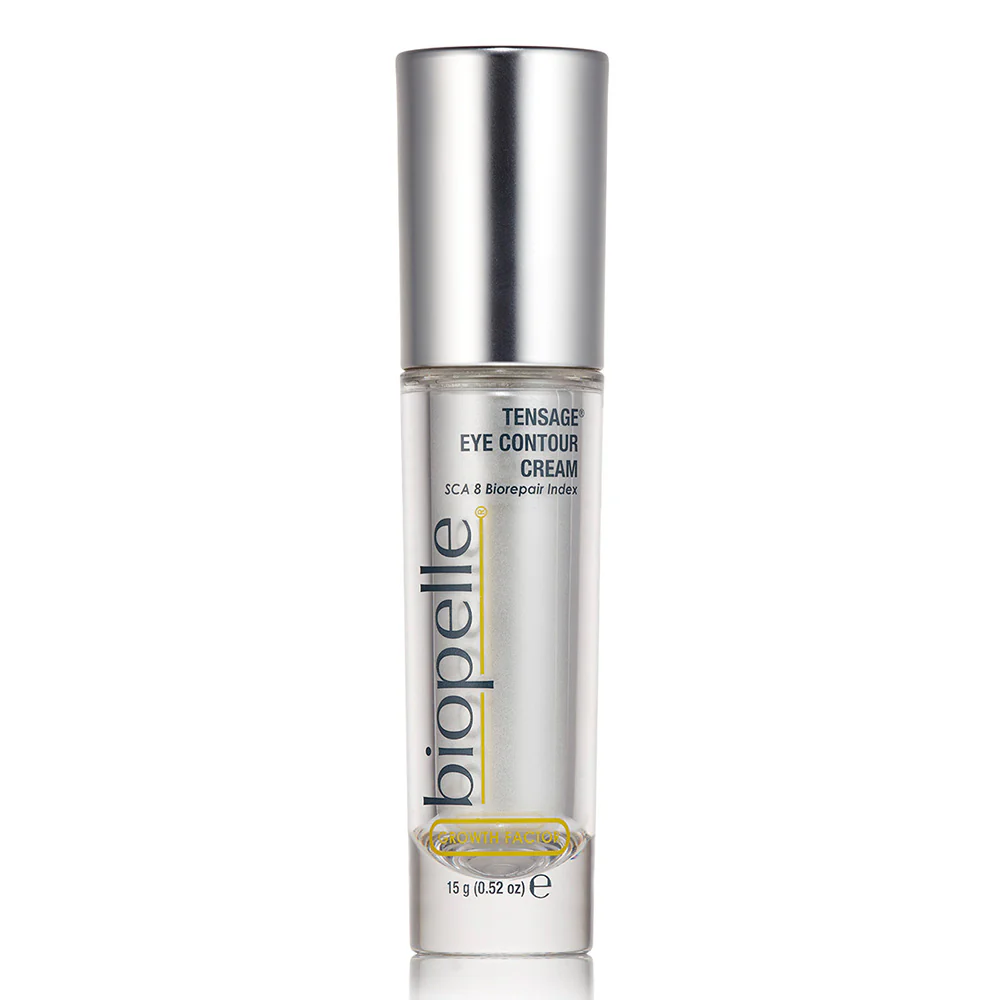 |
| 🌌 The evening routine included Biopelle Tensage Intensive Serum 40 (containing 40% SSF) applied to one side of the face, with a placebo on the other side, for 12 weeks. The serum now retails for $150. | 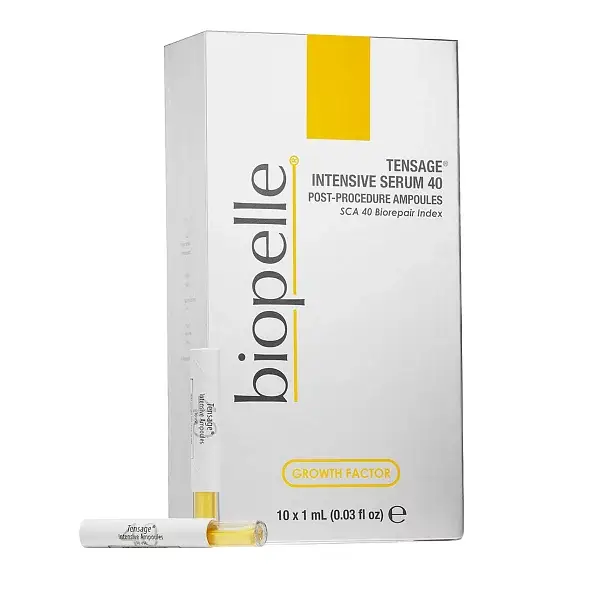 |
✅ Both the active and vehicle ingredient lists were fully disclosed, with the only difference being the presence of SSF in the active treatment products and its absence in the vehicle products.
There were three separate types of outcome measurements: subject-reported improvement, expert-assessed outcomes, and instrumental analysis of silicone replicas.
🙋♀️ We exclude subject self-assessment from our analysis, as it is not considered sufficient evidence in clinical research and is typically used to complement rather than replace objective measures.
🧐 The expert assessment reported a statistically significant improvement in wrinkle severity on the SCA-treated side, but not on the placebo-treated side. However, no actual numbers were provided for the placebo side. Without a direct statistical comparison between the active and placebo sides, the result remains inconclusive.
The same applies to the skin texture assessment – no numbers were reported for either side, only a conclusion that the SCA-treated side showed greater improvement. Finally, the photodamage severity assessment showed no difference between the SCA and placebo-treated sides.
⚖️ The last one – instrumental analysis of silicone replicas – measured the severity, depth, and number of crow’s feet (fine lines and wrinkles around the eyes) and is the most interesting as it’s the most accurate method of the three.
But unfortunately, it is completely inconclusive. The authors of the study did not report baseline and post-treatment values for both the active and placebo sides, making it impossible to draw reliable conclusions. We have to trust their interpretations – and the study was sponsored by Biopelle, you know...
But still, let’s look at what they did share. They measured two types of wrinkles – fine lines (measured with parallel lighting) and crow’s feet (measured with normal lighting):
Fine lines – There was no difference versus placebo for fine lines. So, the SSF routine didn’t demonstrate any superiority over placebo.
Crow’s feet – Two out of three parameters – skin roughness and wrinkle length – were vaguely described as "directionally significant," which actually means they were statistically insignificant.
Only one of the three measured parameters – the total number of wrinkles – showed a statistically significant improvement versus baseline, while the placebo formulation didn’t. So, superiority to placebo was shown in just one metric out of six – and even that is unverifiable due to the missing baseline and post-treatment values for both the active and placebo sides.
But if we look at the results from another angle, this study proves one important thing – SSF, in general, was not shown to be statistically superior to placebo.
This recent, independent study (2020), conducted in Bangkok, Thailand, evaluated the effectiveness of SSF after ablative fractional carbon dioxide (AFCO₂) laser resurfacing – a cosmetic treatment that removes microscopic layers of skin to stimulate collagen production and improve acne scars and skin texture. The study included 22 participants who underwent AFCO₂ laser resurfacing on both cheeks, followed by twice-daily application of either an SSF-containing product or a placebo (vehicle) on opposite cheeks for 14 days.
✅ Both active and vehicle ingredient lists were fully disclosed. The only difference between formulations was the presence of SSF in the active treatment, while it was absent in the placebo. Although the exact concentration of SSF was not specified, it was the first ingredient listed, suggesting a relatively high concentration.
Eight skin parameters were assessed:
⚖️ Instrumental measurements: Corneometry (skin hydration), TEWL (skin barrier function), Lightness index (skin brightness), Edema (swelling), Erythema index (redness), and Crusting (scabbing).
🙋♀️ Subject self-assessment: Pruritus (itching), Tightness score (skin tightness).
✅ Notably, this was the only double-blind RCT reviewed in which baseline and post-treatment values for all endpoints were clearly reported for both active and vehicle formulations.
The SSF formulation was statistically superior to placebo only in one parameter out of eight: corneometry levels (skin hydration). All other measured parameters – TEWL, lightness index, erythema, edema, crusting, itching, and tightness – showed no statistically significant differences between SSF and placebo-treated sides.
Thus, with significant improvement observed in only one out of eight measured outcomes, this study demonstrates no meaningful superiority of SSF over placebo, except for basic skin hydration.
Snail mucin was once extracted through cruel methods, such as submerging snails in saline or vinegar solutions, which harmed or killed them. Today, most producers claim to use "cruelty-free" methods, such as:
🐌 Allowing snails to roam on mesh surfaces, where their natural movement produces mucin.
💨 Stimulating secretion through ozone mist and a 🧪5-10% citric acid solution¹², using Müller One machines – capable of processing up to 4,000 snails per hour and producing three gallons of mucus.
⚡️ Low-voltage electrical stimulation – snails are placed in a special device with distilled water, electrically stimulated at low voltage, and then returned to breeding⁷.
The snail mucin producers claim that the extraction process doesn’t cause any stress or harm to the snails. They acknowledge that snails release slime when they move, and when they experience pleasure or fear – but insist that pleasure is the driving force behind snail mucin extraction. "We consider this machine as a spa for snails," says Simone Sampo, the president of the International Snail Breeding Institute in Italy, referring to the Müller One extraction process.
There’s a chance, of course, that 4,000 snails packed into a machine – first sanitized for half an hour with ozonated water and then sprayed for another half an hour with a stimulating 10% citric acid – really do feel pleasure, but we have some doubts they’d describe it as a spa day.
Below is a video about snail mucin extraction from Business Insider.
At 5:18 in the video, the observed behaviors of snails releasing slime bubbles and retracting into their shells are well-documented¹⁶ defensive responses to perceived threats:
🐚 Shell Retraction – Snails commonly retract into their shells to shield themselves from predators and environmental hazards.
🫧 Slime Bubble Production – The secretion of slime bubbles serves as a defense mechanism against irritants or harmful substances. This foamy secretion can deter smaller predators, such as ants, from entering the snail's shell.
These behaviors clearly highlight the snail's innate strategies for protecting itself from danger.
After undergoing the extraction procedure, snails require a recovery period of at least one month before they can be reused – which hardly sounds like a relaxing experience. No studies have been conducted to measure their stress levels – and snails certainly can't tell us how they feel.
In a 2016 study published in the Journal of the American Association for Laboratory Animal Science, researchers observed how land snails reacted to various euthanasia methods. When immersed in ethanol solutions, the snails exhibited behaviors such as bubble production, retraction into their shells, defecation, and mucus secretion – all interpreted as potential signs of aversion, discomfort, distress, or pain.¹⁷
It’s estimated that 3.8 to 12 billion snails are farmed globally each year, mostly for food. While food demand has remained stable, the snail mucin market is expected to double within the next 10 years, requiring more snails and higher production.
Many farms still produce both mucin and escargot, but an increasing number focus exclusively on mucin extraction. After several harvesting cycles, these snails are "retired" – a polite term for being slaughtered and discarded without further use. This raises huge ethical concerns, especially since the supposed benefits of snail mucin in skincare remain largely unproven.
Snail mucin is marketed as a "natural" and eco-friendly ingredient, but the reality is more complex. Farming billions of snails requires significant food, water, and energy. If mucin offers no proven skincare benefits, this supply chain amounts to unnecessary waste and environmental harm.
Beyond snail farming, the environmental footprint extends to plastic waste. Millions of plastic bottles are produced each year to package snail mucin products. Products like the COSR Advanced Snail 96 Mucin Power Essence are often marketed as an extra skincare step – but if snail mucin’s benefits are unproven, this could mean consumers are generating more plastic waste for no gain.
Researchers at Johns Hopkins University are developing synthetic snail mucin, replicating key proteins in the lab. This could provide a sustainable, cruelty-free alternative – but only if the claimed skincare benefits of natural mucin are scientifically validated.
After thoroughly analyzing available clinical evidence, we found no reliable support for the extensive skincare claims surrounding Snail Secretion Filtrate (SSF). Out of six clinical studies initially qualifying as robust evidence, only two met basic methodological standards, and even these demonstrated no meaningful advantage of SSF over placebo beyond modest improvements in skin hydration. Our findings are reinforced by an independent systematic review, which also concluded there was "low to very low certainty" about the efficacy of snail mucin, citing poor study design, small sample sizes, and high bias risks among thousands of reviewed studies.
This lack of scientific validation raises significant ethical concerns. Snails are exploited at an industrial scale, with millions subjected annually to extraction methods described by producers as "cruelty-free." However, these practices – including crowded conditions, ozone mist exposure, citric acid spraying, and electrical stimulation – likely cause substantial stress rather than the "pleasure" producers claim. Snails typically require extended recovery periods post-extraction, further casting doubt on their welfare.

The environmental implications of snail mucin production also cannot be overlooked. Farming billions of snails demands substantial resources – food, water, energy – and results in considerable environmental burdens. Furthermore, millions of plastic bottles produced annually for packaging snail-based skincare products add unnecessary waste to ecosystems. Without proven skincare benefits, the ecological cost of snail mucin becomes indefensible.
Given the scale and profitability of the multi-billion-dollar snail beauty industry, there is no excuse for the absence of robust, convincing studies confirming mucin’s efficacy. This glaring gap in scientific validation raises serious questions about the transparency and integrity of the snail beauty industry.
Ultimately, relying on unproven claims to justify large-scale exploitation of living creatures for cosmetic products raises profound ethical and environmental concerns. If this discussion comes to the forefront, consumers and the skincare industry alike may want to reconsider the use of snail mucin, which currently stands on questionable science, significant ethical compromises, and troubling sustainability practices.
